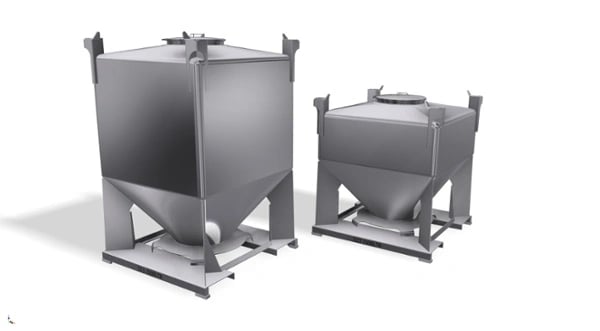The marketplace for the manufacture of generic oral solid dosage (OSD) pharmaceutical products is a crowded and competitive one. How does a new entrant to this sector, or an established manufacturer seeking to grow, outcompete the competition? One way may be to examine your materials handling processes in your pharmaceutical facility.
No compromises
In pharmaceutical manufacturing, adherence to Good Manufacturing Practice (GMP) regulations is of paramount importance. With consumers’ lives potentially at risk if something were to go wrong in the manufacturing process, it is imperative not to compromise on product quality or integrity.
But with the production of generic OSDs being characterised by low profit margins and high volume sales, it can be difficult to find a way to make savings to gain a competitive edge over rival producers while maintaining GMP standards.
Think LEAN
Lean manufacturing is all about eliminating waste with a view to increasing productivity, reducing costs and improving value for customers. With generic drugs and biosimilars, there is little room to cut costs, but one area of saving is to achieve greater production efficiency by looking at the way you handle ingredients.
Traditional manufacturing lines are not always lean
Though the need for materials handling is largely eliminated in a continuous, automated production line, it is not always the most efficient way of doing things.
Take the manufacture of tablets. In a simplified continuous system, the raw ingredients are fed into a blender, which is in turn coupled directly to the tablet press, which churns out tablets straight into the packaging line. The whole process seems relatively efficient – fewer personnel are required to manually transfer materials from one stage of the line to another, thus eliminating human error and effort, fewer ingredients are lost as dust or discarded due to contamination, and the whole process operates as one smoothly flowing system.
Until, that is, something goes wrong, or you want to change the product recipe.
Continuous processing is inflexible. Because one stage of the manufacturing process is directly coupled to the next, each product requires its own dedicated production line, with its own set of expensive equipment.
If a blockage or fault were to occur in the system, the entire production line must be closed to rectify the problem and clean the equipment, and the whole current batch must be discarded because of the risk of contamination.
Another disadvantage of continuous processing is that a production line can only operate at the speed of the slowest step in the process. This creates bottlenecks in the system and limits productivity.
Intermediate Bulk Containers (IBCs) provide a solution
Consider the use of a Matcon IBC-based manufacturing system in your pharmaceutical facility.

These IBCs offer several cost-effective advantages, for example:
- Cone Valve technology allows complete discharge of materials inside the IBC, so no residue is left inside – vital when feeding an RMG
- Reducing the number of filling and emptying steps also reduces cleaning requirements, saving money on cleaning materials and personnel.
- Transfers are made in a closed system, meaning that Matcon IBCs greatly reduce the potential for contamination of process areas.
- Segregation of ingredients ensures a consistent, high quality mixture that conforms to GMP guidelines and reduces spoiled batches.
- Using IBCs to move materials between processes means that each process can operate at its optimum rate, increasing efficiency and capacity, and therefore profits!
In addition to using IBC’s between process steps they can also be used to feed the RGM with dispensed product. This saves time, reduces dust and operator input in the granulation suite, increasing overall efficiency.
Posted by
Matt BaumberTopics:
Pharmaceutical

